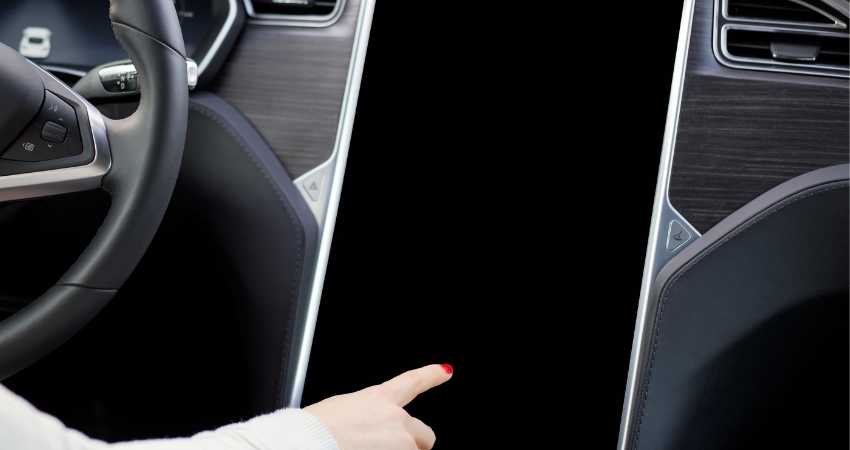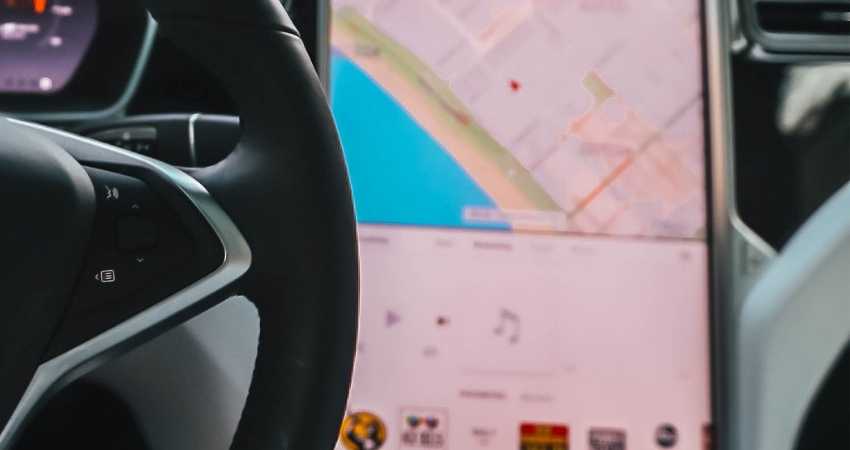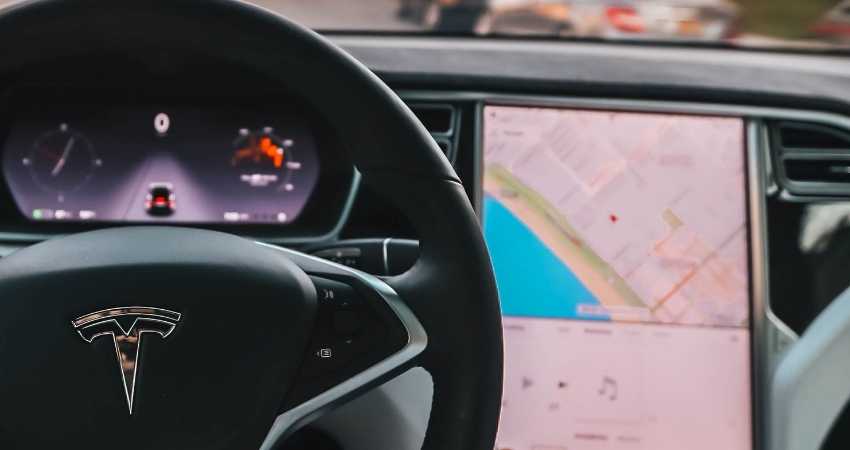Tesla cars are—indeed—computers running on wheels, but they are ultimately run by software, and any issue in this perspective can stop their movements. A common among those is the Tesla Media Control Unit (MCU) problem that has surfaced in different models since 2019. The issue was officially investigated by the NHTSA too. Here is what you need to know.
Tesla MCUs cause issues mainly due to faulty eMMCs (embedded multi-media cards), leading to permanent failure. It happens when the read/write cycles exceed the chip’s capabilities. The unit can also malfunction due to temporary unresponsiveness.
The Most Common Issue With Tesla Media Control Unit
- Dead Touchscreen: It arises when the MCU does not respond, disabling all non-essential functions such as heating/cooling and navigation. It is reported in the Model S, and Model X manufactured between 2012 and 2018.
- Unresponsive Touchscreen: It is a similar issue found in all Tesla models that might occasionally arise regardless of the manufacturing year. Unlike the dead MCUs, touchscreens are not permanently unresponsive in this case.
Reasons Behind Tesla Media Control Unit Issues
Dead Touchscreen
The root cause of having the Tesla touchscreen dead is a bad eMMC. Unfortunately, the eMMCs used in Tesla cars manufactured between 2012 and 2018 cannot handle too much load. It is only rated for 3,000 cycles and begins degrading beyond that.
These eMMC chips are only 8 GB and are installed in the MCU1 units. Tesla has responded to the issue by upgrading the chip to 64 GB, installed in the newer MCU2 units.
Unresponsive Touchscreen
Tesla touch screens can freeze for several reasons. It most likely occurs due to software glitches and returns to normal after a reboot. The screen might show this unusual behavior when stuck in an infinite loop. Like the dead screen issue, the frozen screen problems usually surface in the MCU1 units more often.
Symptoms of Tesla Media Control Issues
Dead Touchscreen
- Failed updates installation
- Failure to connect to the WiFi and Bluetooth
- Frequent reloading in the MCU
- Overall slow functioning and loading
- Rebooting and resetting do not make any difference
- The unit crashes more often
- Trip counters do not add mileage
- Voice commands do not work
Unresponsive Touchscreen
- The screen is pitch black
- The screen does not respond after you have accessed some option
- Other functions, such as radio and music streaming, also do not work
Solutions for Tesla Media Control Issues
Dead Touchscreen
Some fixes are available for the dead touchscreen issues, namely, troubleshooting and replacing the eMMC chip. If you have this issue, try the following before considering chip replacement. However, note that although not all MCU1 units have failed, they might eventually fail sometime.

- Unplug all USBs. Ensure no wireless device is connected to your car, i.e., Bluetooth and WiFi. This should ease the load on the chip, and it might become responsive again.
- If the touchscreen has not crashed entirely and you can somehow reach the reboot options, go for it. A simple reset might eliminate any unnecessary load on the car software. Park your car in a safe zone, hit controls, go to safety, and touch the power off option. Wait for two minutes, at least, and hit the pedals or open the doors to bring the vehicle back to life.
If these endeavors do not work, the eMMC might have broken down completely. It will need a professional hand to get fixed.
Unresponsive Touchscreen
Both soft and hard resets will work to bring the screen back to life. However, if you see no results with the soft one, go for the hard reset. Follow these steps:
- Park your car in a safe area.
- Open the frunk.
- Access the battery by removing the top panels.
- Locate the 12 volts battery.
- Disconnect the ground and the first responder loop.
- Wait for at least 2 minutes.
- Reconnect the ground and the first responder loop.
These steps work for all Tesla models. However, doing a hard reboot can lead to accidental warranty voiding. Therefore, visiting a professional service center is recommended instead of trying it alone. We recommend keeping it updated.
Getting Tesla Media Control Unit Issues Fixed
Contact Tesla to get your MCU fixed. If the problem pertains to the dead touchscreen, you will get an upgraded eMMC (64 GB) or change the unit to MCU2. The new unit came out in the spring of 2018. Besides fixing the basic issue, you will also get several other features, such as 5G and enhanced driver visualizations.
If the problem is about freezing, you will not get any hardware upgrade, and the service will only revolve around minor tweaks. However, if the screen becomes unresponsive due to breakage, you might need to get it replaced without interfering with the whole MCU.
Cost of Getting Tesla Media Control Unit Issues Fixed
It depends on the warranty. If your Tesla is covered, you will get it for free; however, if it is not, you will have to pay for it. Initially, Tesla offered a warranty for MCU issues only for four years. Still, after the problem surfaced in many vehicles, the period was extended to 8 years and 100,000 miles, whichever comes first. If your vehicle has shown up this issue after the warranty period has passed, you will have to pay up to USD 1,500.
If your touchscreen has become unresponsive, you will not be charged that much; however, if there is any hardware issue behind it, you will have to pay to get rid of it.
Read: Why Is My Tesla Drive Unit Causing Issues?
Is it Wise to Purchase a Tesla With MCU1?
It depends. Generally, as per a review, people only recommend getting an older version of a Tesla car if they have the MCU issue fixed, especially if the warranty period has passed. Nevertheless, getting a Tesla with the original MCU will be wise if the warranty is still there.

Furthermore, you can ask the seller a few questions about the present condition of the MCU performance. If it functions correctly, you can take a chance to buy the car if you have an emergency. However, note that it is not recommended. Though the bad MCU will not hamper any essential functions, it might hinder the charging process and mobile connectivity, giving you a big headache for the time being.
MCU Dead With Pin-to-Drive Enabled: What to Do?

Luckily, Tesla does offer a simple solution to get your vehicle moving in case it cannot start without an MCU. If you have a pin-to-drive option enabled in your Tesla (you need to enter a pin code to start your vehicle), your car will not be usable with a dead MCU. To overcome this issue, Tesla says you should disconnect the 12-volt battery for a short duration and reconnect. It will disable the pin-to-drive option. The company further states that the choice is not a security bypass but a one-time solution to help the owners reach the service station to fix the MCU.
Concluding Remarks: Why Is My Tesla Media Control Unit (MCU) Causing Issues?
Tesla MCUs malfunction due to bad eMMC chips. They can also face issues due to software glitches. If your Tesla has those problems, follow the step to troubleshoot, but in extreme cases, you will have to get a professional hand involved—it might cost you, though.
Tesla is always up to resolving its technical issues for the best customer experience. Considering convenience, the company has recently halved the MCU upgrade price from USD 3,000. But being charged for the company’s technical failure is generally regarded as unfair among the masses. Moreover, some sources also state that even the MCU2 will have issues.



Aw,this waas an exceptgionally gokod post. Taking a
few minutws and actual effort tto genereate a very ggood article… but whzt can I say… I putt things off a llot
and never seem to get ahything done.
If youu wish for tto improve your experrience simply keep visiting this siote annd be updated with
tthe ottest gossip posted here.